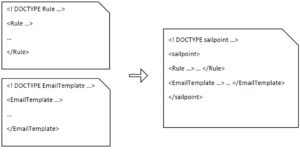Okta is the leading solution for user authentication and single sign-on (SSO) for workforce as well as customer identities. Okta is capable of managing SSO to wide range of applications along with multi-factor authentication, directory integrations and lifecycle management from the cloud.
SailPoint IdentityNow is a cloud based identity and access management solution which aims to provide identity-as-a-service. IdentityNow enables a complete set of IAM capabilities delivered from the cloud to manage hybrid IT environments that include on-premises and cloud resources. IdentityNow supports SAML based Single Sign On. SAML is an open standard which allows an identity provider (like Okta) to pass on authentication information to a service provider (like IdentityNow).
In the following demonstration, we take a look at the SAML integration of IdentityNow with Okta for Single Sign-on. We will also go over the Active Directory integration in Okta and how this can be backed by IdentityNow’s lifecycle management.
